A well-defined city street, whether a wide avenue or narrow alley, with a proper urban edge and buildings lined up in a row can create some of the most pleasant experiences in the urban environment. One of our favorite urban phenomena is the “urban canyon” effect created when the ratio of building height to street width is very high. This pattern was common in many cities, and still is in some cases. The shady, and what some have called congested streetscape, however, was the target of much anti-urban renewal programs of the mid 20th century.
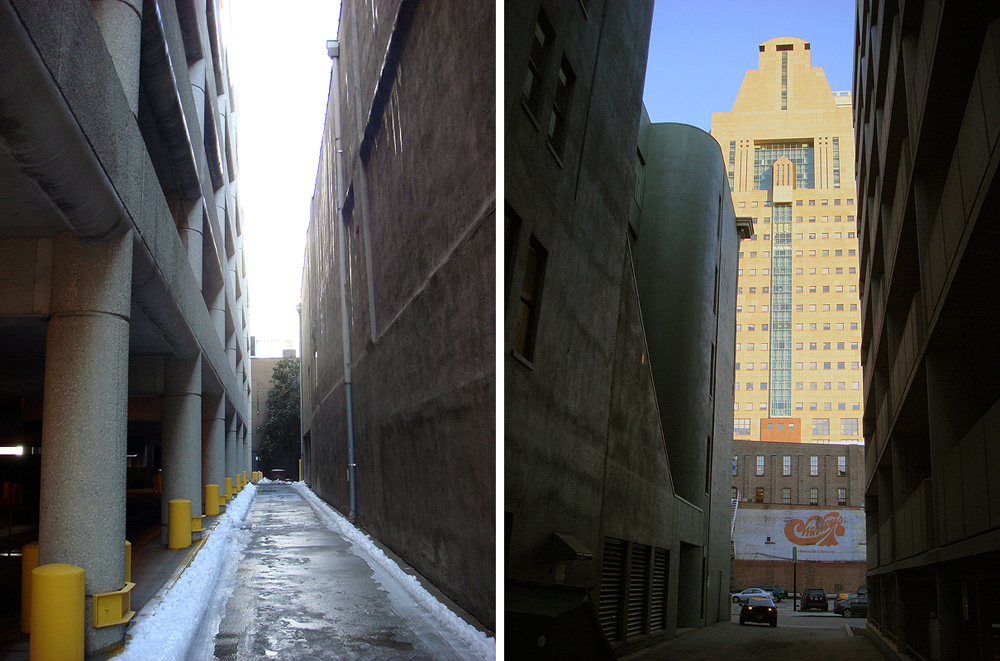
Once perceived as soul-crushing, urban canyons were synonymous with overcrowding and no sunlight. The epitome of high density became the antithesis of the modern suburb with its lack of definition and wide open spaces. While Americans were flocking to Europe to walk along narrow Medieval lanes, the bulldozers back home were trying to eradicate similar features from the American landscape.
Today, there are still many instances where the urban canyon can still be experienced in Louisville. While there are seldom any active uses to compel a pedestrian to use them, the narrow alleys still offer an incredible feeling of being “in” the city. Feeling the presence of the mass of structures all around can be a profoundly urban experience.
We like them also because of their grit and often pure utility. The paint is more often peeling and the walls are dingy in the canyon-alleys. Exhaust fans create a hum and often perfume the air with scents of gourmet restaurant kitchens. They are often still paved in bricks or cobblestones. These alleys are likely to be very calm with the sounds of automobile traffic fading away onto the main street. There’s no need for sidewalks here, since the cramped quarters forces traffic to move slowly and gives automatic right of way to the pedestrian.
Imagine, though, if we started to utilize our alleys as more than just a place to store the dumpster or make deliveries. What if they could become a second city grid full of cafes and pubs and secret hidden gems. You would have to explore the city fabric to know it, and you would be held in the arms of the city’s architecture the entire way.
Could we give our urban buildings a second face? A formal face fronting the grand street and a familiar, local face along the pedestrian centered alley? That idea was tossed around recently with the Cordish Companies proposing a pedestrian promenade connecting 4th Street Live! with the City Center project in an alley adjacent to the Starks building. While all under control of one company, the effect of an “active” alley could still be a dynamic new way of experiencing the city. Those plans seem dim now, though, as Cordish has dropped plans to renovate the ground floor of the Starks building.
Where else could this alleyway-as-local-street be implemented? We’ve thought for some time that the alleys paralleling Bardstown Road or Frankfort Avenue could offer one option. There are already many two-story carriage houses lined up behind the mansions on Cherokee Road and the brick alleys could expand the width of an otherwise linear corridor. We’ve compiled a collection of some of the canyon-like alleys in Downtown after the click. It’s certainly not comprehensive, but offers a glimpse at the potential of a narrow lane.


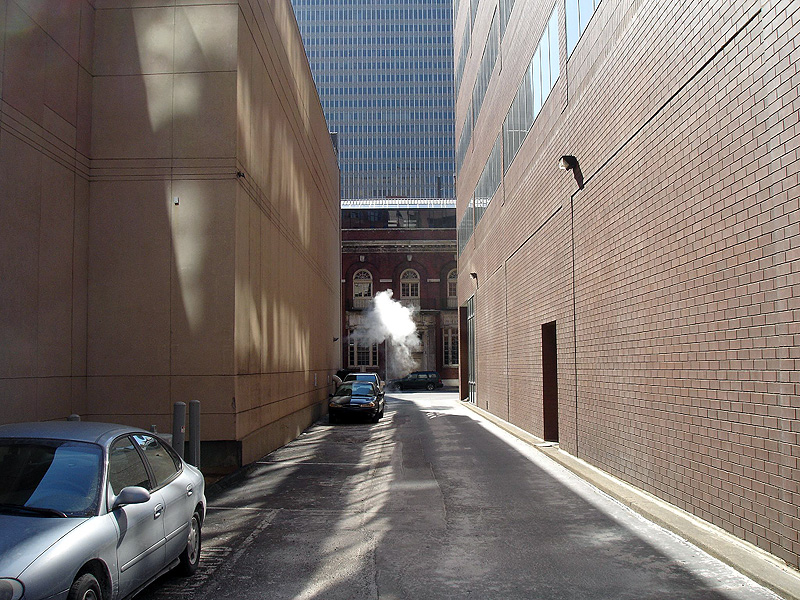
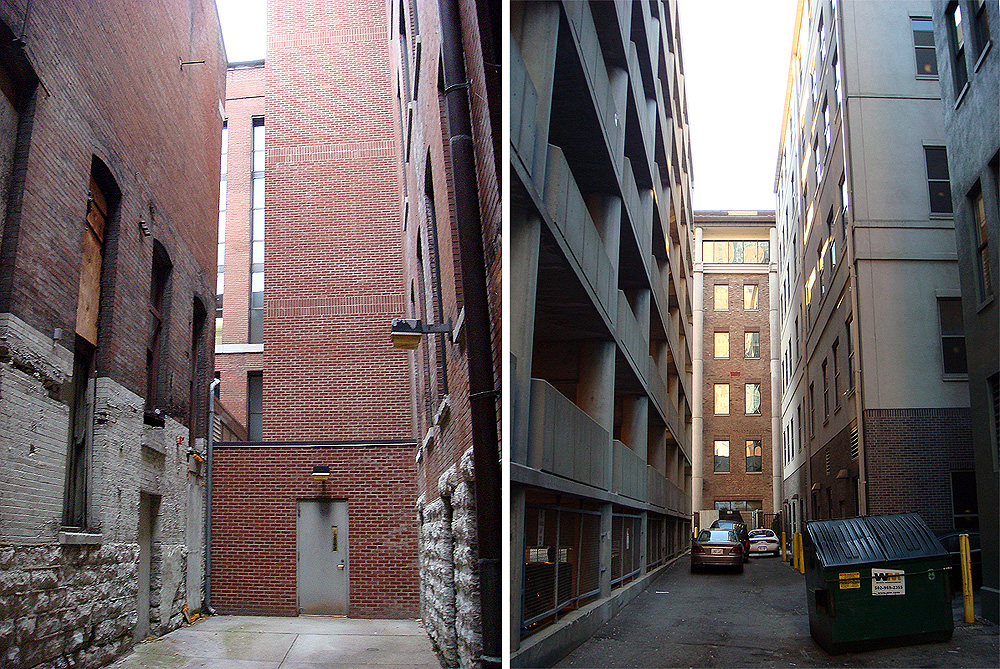

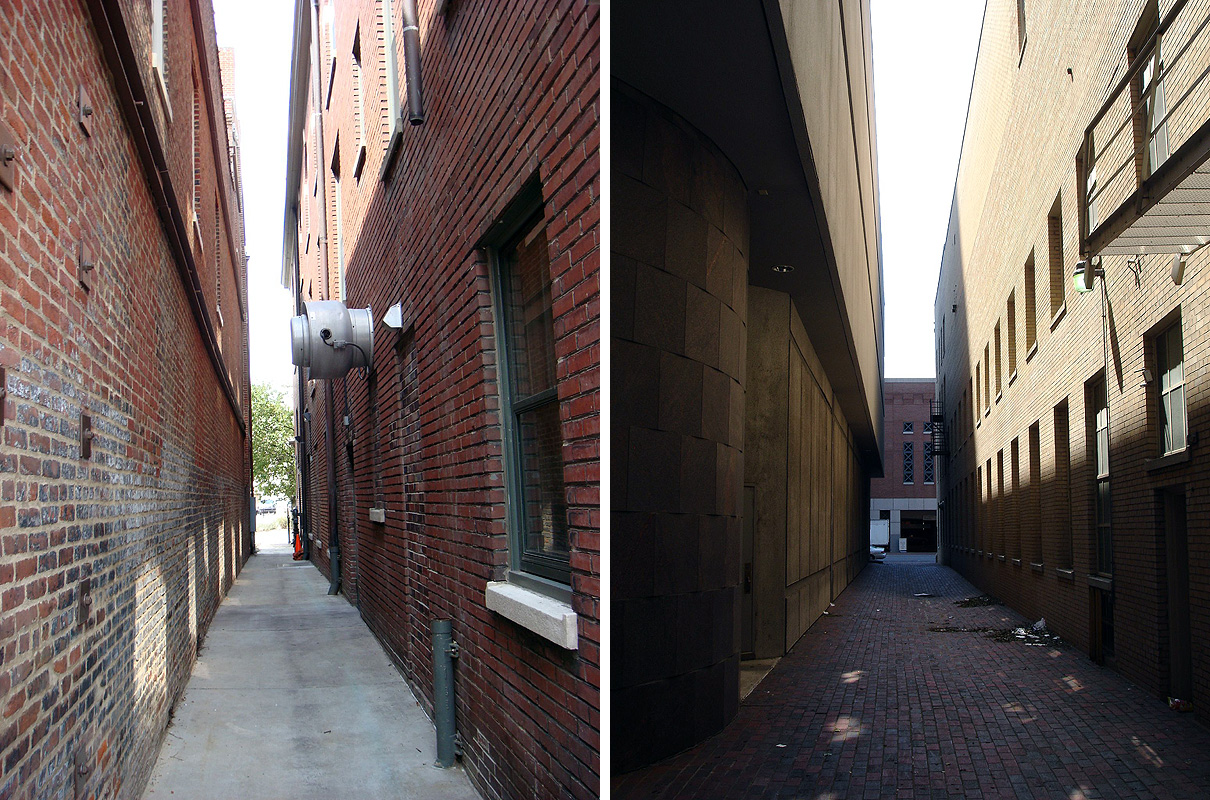

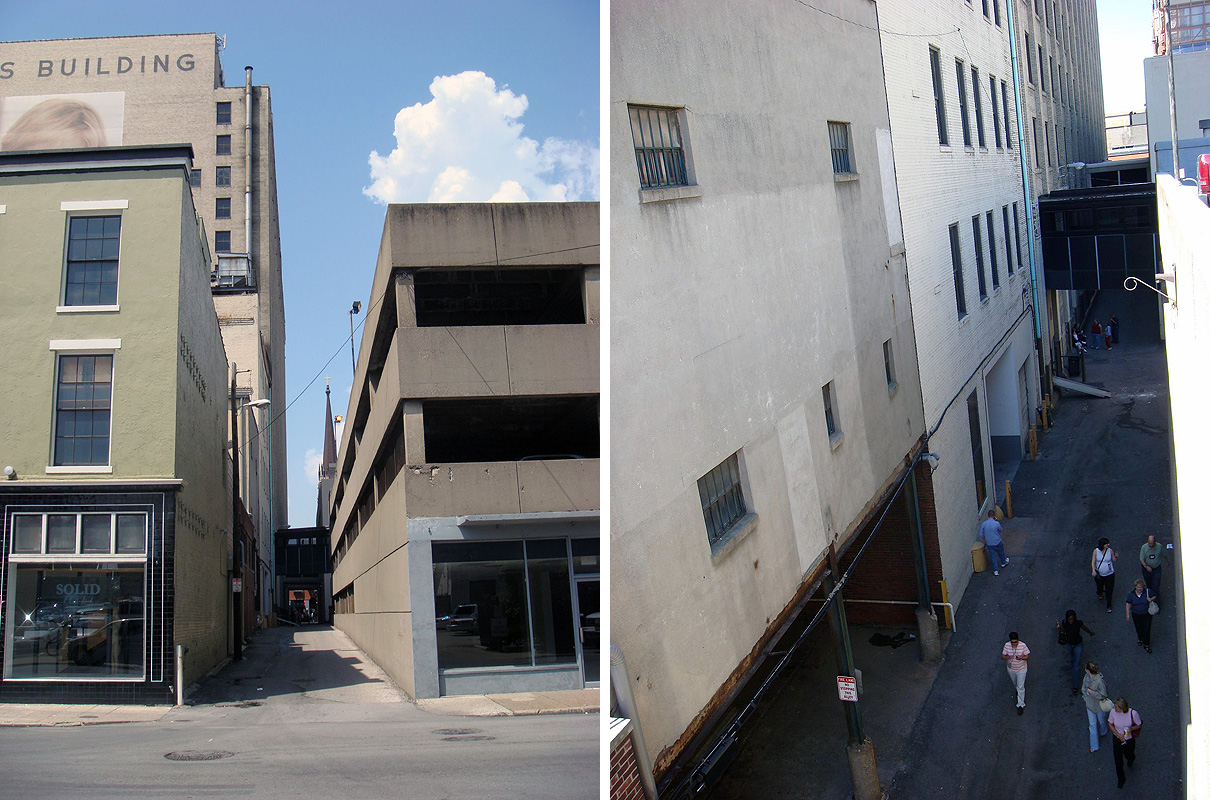



I a impressed with the depth of this post. I enjoy the urban canyon as well and cafes or bars n these areas would add a much needed more intimate feel to many areas of downtown Louisville… Including 4th street live… Which can become overwhelmed with commercialism and big business. Great site great post
There is an urban canyon that runs between Main and Market streets. Start at 3rd street facing west, walk into the parking garage in the middle of the block. Follow the alley through to 4th. Cross 4th and enter the corridor behind the US bank building. This will connect to the park with the fountain. Head west across 5th street and enter the corridor that cuts between Vincenco’s and the Humana garage. When you reach 6th street the virtual alley turns into a real ally behind the Louisville Bar Association building…
Great post. It’s always good when we get to read some of your opinion especially when it’s such an awesome idea. Although I do have to admit, I enjoy the peace traveling through alleys can provide some times.
Great pictures and a great blog! Keep up the great work!
[…] at Broken Sidewalk suggests making better use of our alleyways: Imagine, though, if we started to utilize our alleys as […]
Great pictures. I like the concept, and am impressed with how clean all these alleyways are in Louisville.
For more information on alleys and this concept go to the Center for Spatially Integrated Social Science web site at http://www.csiss.org/classics/content/21 OR better yet, check out the writings of our very own Louisville Treasure, Grady Clay, in his book “Alleys: A Hidden Resource. (Louisville, KY: Grady Clay and Company, 1978.).”
Grady writes extensively on the history of alleys and the characteristics of the urban fabric. It occurs to me that Grady would absolutely love this blog but is perhaps not so computer savvy since he is in his 80s or 90s.
The following is from a Wikipedia post on Clay that is somewhat out-of-date but is still useful: Clay is an honorary member of the American Society of Landscape Architects (ASLA) and was editor of Landscape Architecture Magazine from 1960-1985. He also was on the jury that judged the design competition for the United States’ Vietnam Veterans Memorial, was the Urban Affairs editor for the Louisville Courier-Journal, and provided a commentary segment, “Crossing the American Grain” for National Public Radio’s Morning Edition. In 1999, he was awarded the Olmsted Medal by ASLA. Clay also is a former president of the American Planning Association (formerly the American Society of Planning Officials).
Thanks Joanne, those are excellent resources. I also highly recommend Grady’s book “Alleys: A Hidden Resource.” You can find a copy at Carmichael’s Bookstore if anyone is interested.
As Bob Dylan would state, ‘Desolation role’, altough yet beautiful and all you said. A fraction could be commercialized , location ” ” “.
I am a regular alley-walking pedestrian. I have been thinking about organizing a neighborhood brigade to encourage property owners to rethink their alleys. The brigade would help to clean up the adjacent areas and then provide guidance in re-purposing/recreating the spaces. It will work if folks take an interest in and responsibility for their piece of the puzzle. (My neighborhood is a mix of residences and businesses.) Sorry I missed PechaKucha.